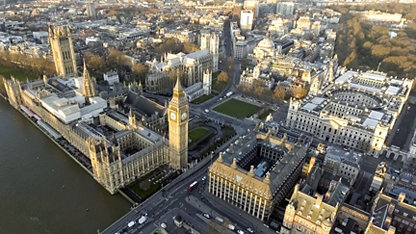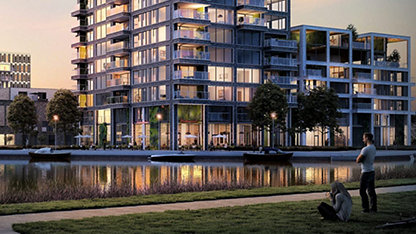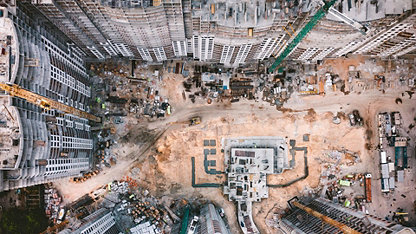Key points:
- Sentiment amongst real estate investors and occupiers improved in Q3, but outlook remains negative amid prolonged economic uncertainty; RICS’ global indicator stood at -31%, up from -37% in Q2.
- Global dispersion is increasing, reflecting economic impact of COVID-19; APAC has seen less severe contraction in Q3, on back of improving outlook in mainland China.
- Sector divergence is picking up pace as real estate responds to structural change in demand.
- Retail vacancies continue to rise, while indicator of change in demand for office space falls to lowest level since the survey began; industrials and data centres see strengthening demand.
Sentiment among global real estate occupiers and investors improved in the last quarter, although it remains near historic lows as the sector confronts structural change and enduring economic damage, according to our latest Global Commercial Property Monitor.
Glimmers of improvement in Q3, although sentiment historically weak
With the global economy set to contract sharply in 2020, RICS’ global indicator, which gauges the sentiment of occupiers and investors in commercial property, registered a reading of -31% in the last three months. Although this represents somewhat of an improvement from -37% in the second quarter, the lowest reading since the financial crisis, sentiment is still deeply negative. Indeed, two- thirds of investors still view global real estate to be in the midst of a downturn with further to go.
While expectations for rents and capital rents are still downbeat, they have also improved a little. A net balance of -31% of respondents now expects rents to decline in the year to come, up from -37% in Q2. A net balance of -27% anticipates capital values to fall, although this figure was even weaker (-36%) last quarter.
Signs of stabilisation in China drives APAC’s relative outperformance
Sentiment remained in negative territory in all geographical regions, but signs of dispersion are emerging. APAC in relative terms saw the more resilient sentiment, with the latest headline sentiment metric improving to -28% from -38%. This was driven largely by the mainland Chinese commercial real estate market, with sentiment among occupiers significantly stronger, reflecting the earlier lifting of restrictive lockdowns. The Middle East and Africa, the Americas and Europe returned figures in the range of -32% to -34% during the quarter, marginally above Q2’s result.
Looking ahead, expectations are the most muted in Europe. In the Americas, the net balance of respondents envisaging falling rents and capital values eased from a respective -40% and -43% back in Q2, to -26% and -22% in Q3. Projections are also flatter across MEA, returning net balances of +2% and -9% for rents and capital values.
Retail vacancies increase and industrials strengthen as structural shift takes hold
While the economic fallout of the pandemic has dampened sentiment across the board, there is also evidence of a structural shift materialising across sectors as digital demand continues to grow.
The retail sector, which was clearly already under pressure prior to the pandemic, has seen an accelerated rise in vacancies globally. A net balance of +43% of respondents now report an increase in retail availability, following downbeat assessments from investors and occupiers throughout last year and this. Although this rise has been most pronounced in the Americas and Europe, APAC and MEA have also seen a noticeable uptick in vacancies. As a result, prime retail rents are expected to fall by -6% over the coming twelve months, with projections for secondary retail rents standing at -10%.
The office sector continues to feel the effects of the increased prevalence of working from home – a trend that is still encouraged or mandated in many countries. A net balance of -69% of contributors globally reported a drop in office occupier demand, representing the joint weakest reading since the survey’s inception in 2008. For the coming twelve-months, prime office rents are now expected to fall 3%, with a steeper decline of 6% projected for secondary office space.
By way of contrast, the industrial sector has seen a pickup in global occupier demand during Q3, mirroring the accelerated consumer demand for online shopping. Growth in the sector has been particularly strong across the Americas, with a solid recovery in Europe too. Up until now, demand for industrials across APAC and MEA has been more subdued in comparison, although in both, are significantly more resilient than those for offices and retail. From a global perspective, prime industrial rents are anticipated to rise by +2% in the year to come. With an increased reliance on digital platform, respondents report the outlook for data centres has strengthened too.
Simon Rubinsohn, RICS Chief Economist, commented: “COVID-19 is casting a long shadow over global real estate, and its mark will last well into the future. And even though market sentiment is no longer at its nadir, it is very weak and fragile indeed in the face of continued uncertainty. What economic recovery we have seen in many countries remains at risk in the face of heightened concern over rising cases.
“COVID-19 is casting a long shadow over global real estate, and its mark will last well into the future. And even though market sentiment is no longer at its nadir, it is very weak and fragile indeed in the face of continued uncertainty. ”
Simon Rubinsohn
Chief Economist, RICS
But while economic growth will likely be slow and uneven globally, structural changes within real estate have been far more rapid. The pandemic has accelerated the decline of traditional retail assets, with negative sentiment now filtering through into reported vacancies. The shift to e-commerce is not a flash in the pan, while greater remote working is unlikely to be a short-lived either. This presents longer-term growth opportunities in several sectors. Even when the global economy is on surer footing, demand for industrials and data centres, for instance, will be here to stay.
Paul Bagust, Global Property Standards Director, RICS: “Uncertainty still abounds for real estate. Flexibility and innovation have been central to the short-term response to the pandemic and the re-opening of buildings, and they will be even more important as consumer and investor demand evolves, and organisations look ahead to an eventual recovery.
“Flexibility and innovation have been central to the short-term response to the pandemic and the re-opening of buildings, and they will be even more important as consumer and investor demand evolves. ”
Paul Bagust
Global Property Standards Director, RICS
“As a result, city centres will continue to change. Flexible and hybrid building use is likely to become more widespread, and will help greater embed resilience into the built environment, allowing asset owners to react to changing demand in certain sectors. Hotels, for instance, could begin to embed workspace. Businesses are also taking a more nuanced view of their office footprint, with the traditional approach to city office space being replaced with property strategies that embrace technology, reflect the changing needs of workforces, and focus on maximising the value buildings deliver.”













